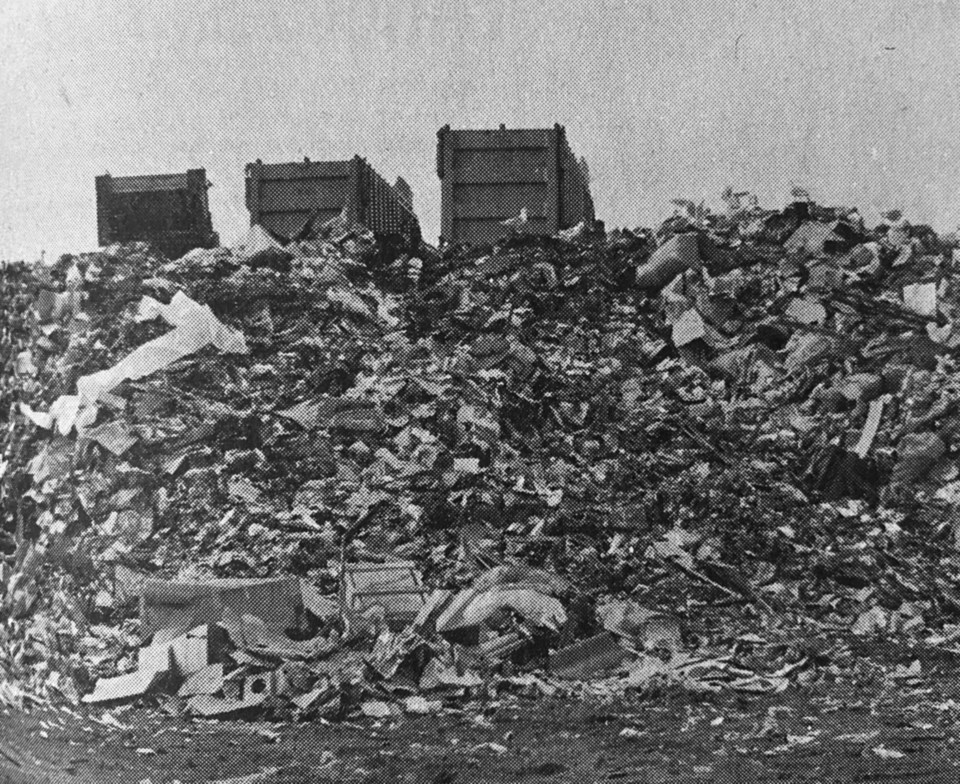Let’s head back to 1970 when the stink coming from the Vancouver Landfill in Delta had created an uproar in the community and had city council wanting answers.
In May of that year, members of Delta council took part in a tour with members of Vancouver council and their engineering department to see how the dump operated and what was causing the stench.
They were told the odour was that of the gas methane, created deep in the bowels of the dump by decomposition of organic material.
At the time, no burning took place and sand was trucked in to use as cover and diminish the smell.
They were also told that the chemistry of decomposition within the covered dump was not well understood but methane gas seeped to the surface through the sand and entered the air.
Delta mayor Dugald Morrison said they also saw what they thought were wisps of smoke emanating from the covered surface and were informed they were looking at plumes of steam.
Vancouver has operated a landfill gas collection and flare system since 1991.
The system was initially installed to control odour but had the added benefit of reducing greenhouse gas emissions. Currently, landfill gas is extracted by a series vertical wells and horizontal collectors and used to generate electricity for sale to B.C. Hydro and heat for the nearby Village Farms greenhouse.
Excess gas is burned by on-site flares to minimize greenhouse gas emissions.
According to the 2022 annual report by the City of Vancouver, which still operates the landfill, the total metered volume of landfill gas collected last year equates to 20,646 tonnes of methane or 516,150 tonnes of carbon dioxide equivalents. It is equivalent to the emissions approximately of 115,937 vehicles over the period of a year.
Vancouver and FortisBC this September provided an update on a construction project now underway for a new Renewable Natural Gas (RNG) facility at the site. The system will clean landfill gas so that it can be injected into the natural gas pipeline as RNG.
Construction and commissioning of the RNG facility may take approximately 12-to-15 months to complete.
Village Farms, meanwhile, intends to decommission its existing cogeneration system and construct a facility to process landfill gas similar to the future FortisBC system at the landfill.
The end products will be RNG, which will be sold to FortisBC and carbon dioxide, which will be used in the greenhouse.
The annual report also notes that, as of December 2022, there were a total of 38 methane monitors installed and operational at the landfill.




